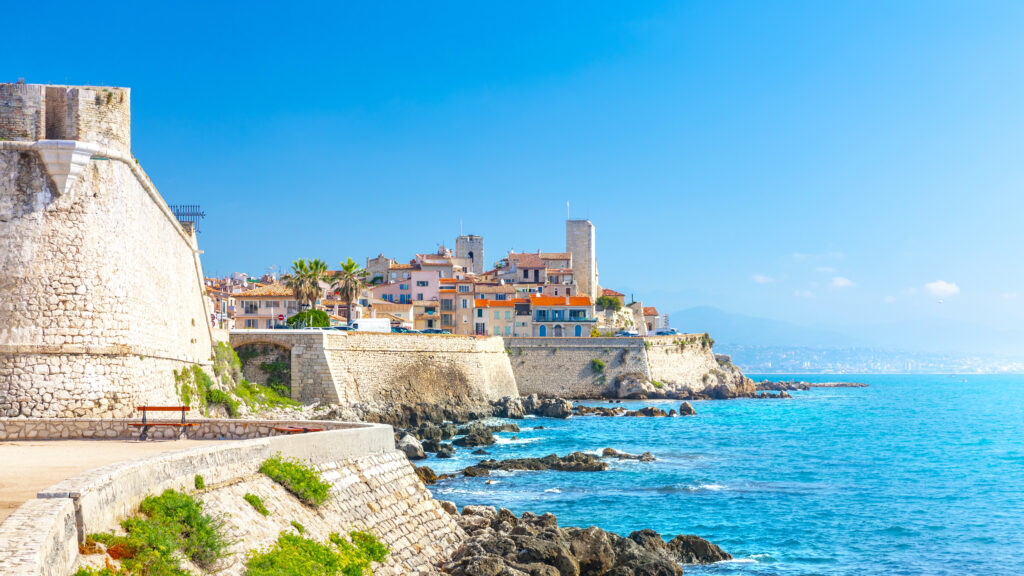
Welcome to Antibes, the jewel of the Côte d'Azur, where history, culture and nature meet in harmony. Whether you're looking for idyllic beaches, an art enthusiast or a lover of local markets, Antibes offers a multitude of activities to suit all tastes. In this article, discover the 11 must-sees: from the picturesque paths of Cap d'Antibes to the fascinating works of art at the Musée Picasso, from the lively Marché Provençal to the unique atmosphere of Jazz à Juan. Get ready for a rich and varied experience in the heart of this emblematic city on the French Riviera. Interested in the Côte d'Azur? Discover its 20 must-sees!
1- Sentier du Littoral, Cap d'Antibes
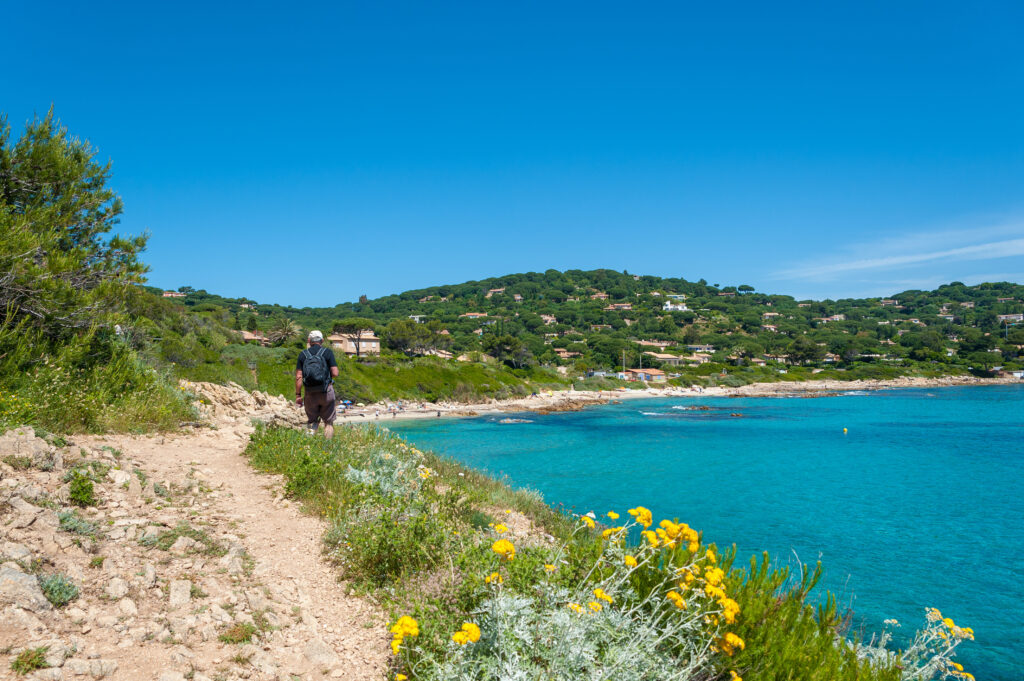
The Sentier du Littoral, also known as the Chemin des Douaniers, is a must for nature lovers and hikers. This trail runs along the wild Cap d'Antibes coastline, offering spectacular views of the Mediterranean and coves ideal for a swim. The trail, about 5 km long, is well-marked and accessible to all, although you'll need good walking shoes. Along the way, you'll pass iconic sites such as Plage de la Garoupe and the Garoupe lighthouse. Allow around two hours to complete the hike, taking time to savor the panoramic views.
2- Picasso Museum
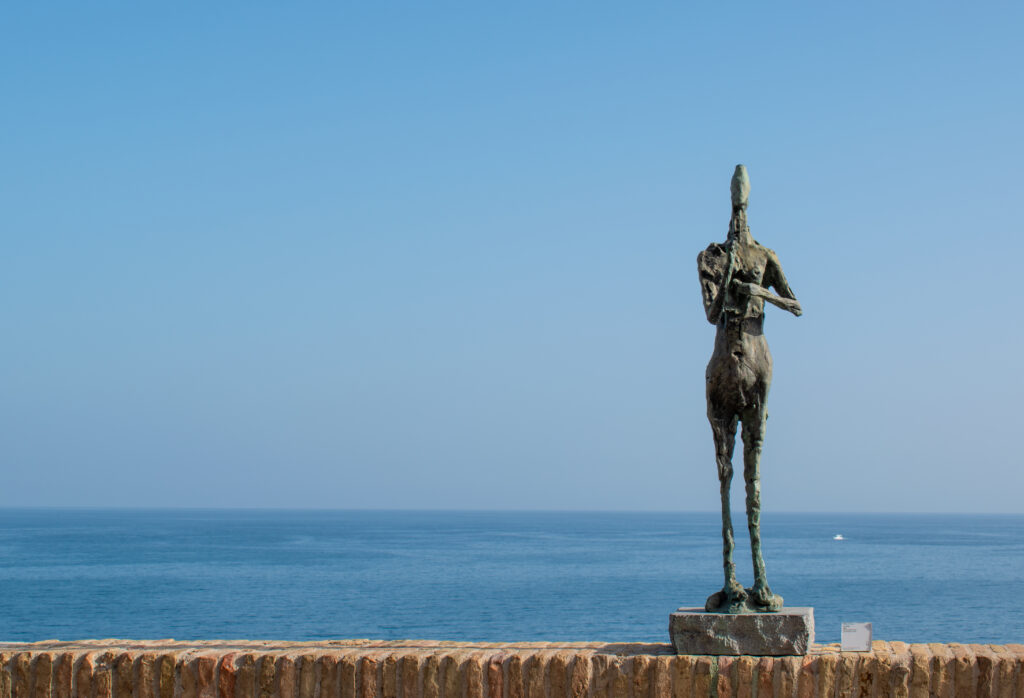
The Musée Picasso, housed in the magnificent Château Grimaldi, is a must-see for art lovers. Located on the seafront, this museum houses an impressive collection of works by Pablo Picasso, who lived and worked here in 1946. You'll discover paintings, drawings and ceramics by the artist, as well as works by other modern artists such as Nicolas de Staël. The château itself is a historic monument, giving way to a breathtaking view of the Mediterranean. The museum is open every day except Monday, and admission costs €8.
3- Le Nomade by Jaume Plensa

Le Nomade is a monumental sculpture by Catalan artist Jaume Plensa, located on the Saint-Jaume bastions at the entrance to Port Vauban. This contemporary work represents a giant human silhouette made up of white steel letters. The statue is particularly impressive at sunset, when the evening light illuminates the openwork forms. This attraction has become a modern symbol of Antibes and a landmark for visitors.
4- Marché Provençal
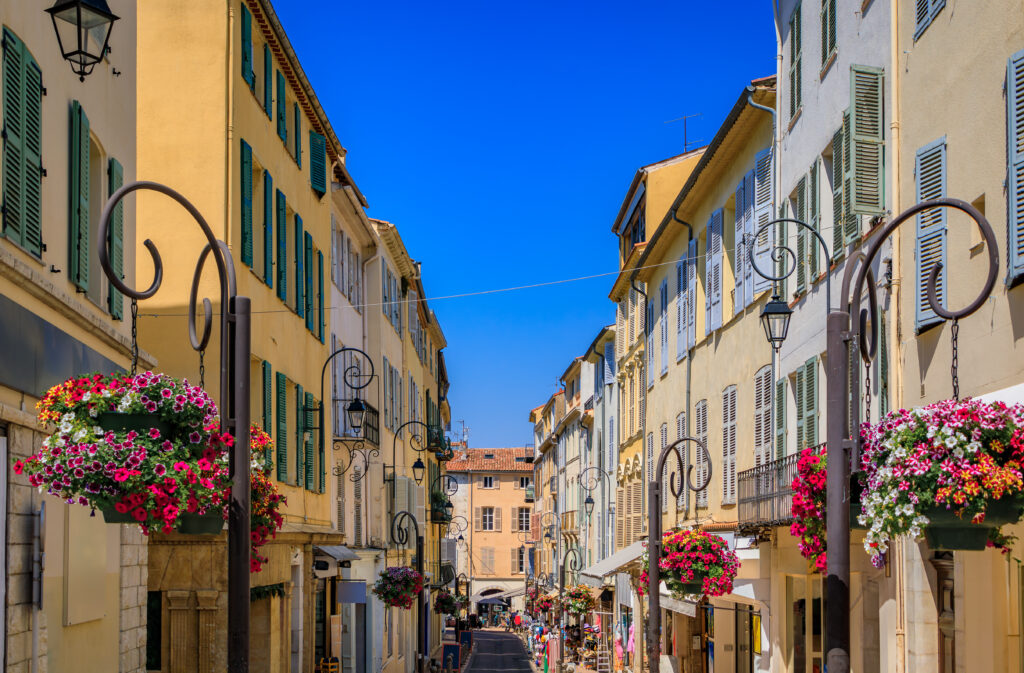
The Marché Provençal, located in the heart of old Antibes on the Cours Masséna, is a must for lovers of fresh, local produce. Open every day except Monday, this covered market offers an explosion of colors and flavors, with stalls brimming with fruit, vegetables, cheeses, charcuterie and regional specialties. In summer, the market is open every morning, while in winter it runs from Tuesday to Sunday. It's an ideal place to discover the delights of Provencal cuisine and meet local producers.
5- Fort Carré
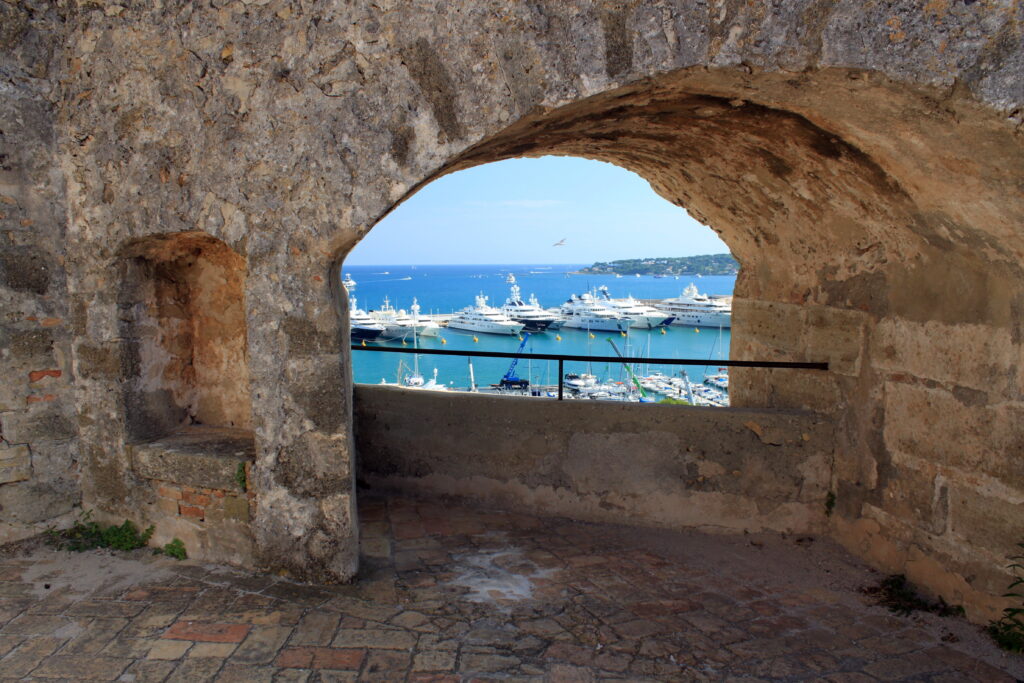
Fort Carré, built in the 16th century and reinforced by Vauban in the 17th, is a symbol of Antibes' military history. Perched on the Saint-Roch peninsula, it offers a 360° panoramic view of the Mediterranean and the city of Antibes. Surrounded by four hectares of parkland, the fort is a pleasant and instructive place to stroll. Guided tours are available to discover its secrets and its strategic role in the defense of the region. The fort is open to the public all year round, with opening times varying according to the season.
6- Plage de la Salis and Plage de la Garoupe
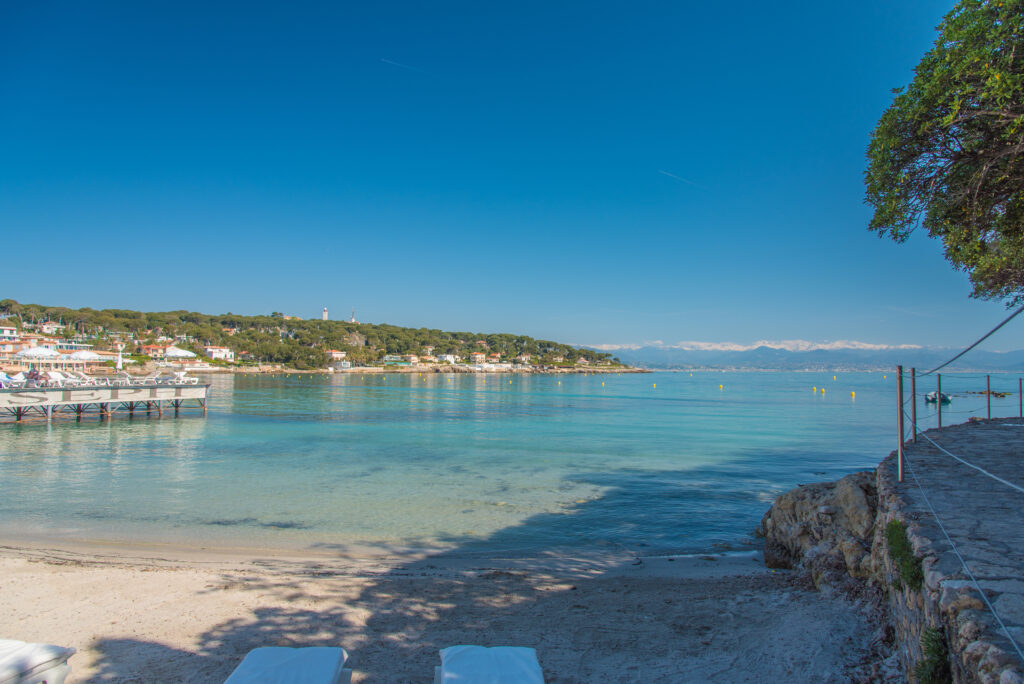
Plage de la Salis and Plage de la Garoupe are two of Antibes' most popular beaches. Plage de la Salis, close to the town center, boasts fine sand and crystal-clear waters, ideal for swimming and lounging. With its shallow waters, it's perfect for families. A little further east, Plage de la Garoupe is nestled between two rocky outcrops, offering a more intimate atmosphere and stunning views of the Mediterranean. Both beaches have amenities such as showers and restaurants nearby.
7- Villa Eilenroc

Villa Eilenroc, located on the prestigious Cap d'Antibes peninsula, is a true architectural and landscaping gem. Built in the 19th century, this sumptuous villa is surrounded by magnificent formal gardens, including a rose garden and olive groves, offering spectacular views of the Mediterranean. Open to the public, the villa offers guided tours of its elegant interior and well-kept gardens. It's the perfect place for a peaceful stroll and to learn more about the history and culture of the region.
8- Port Vauban
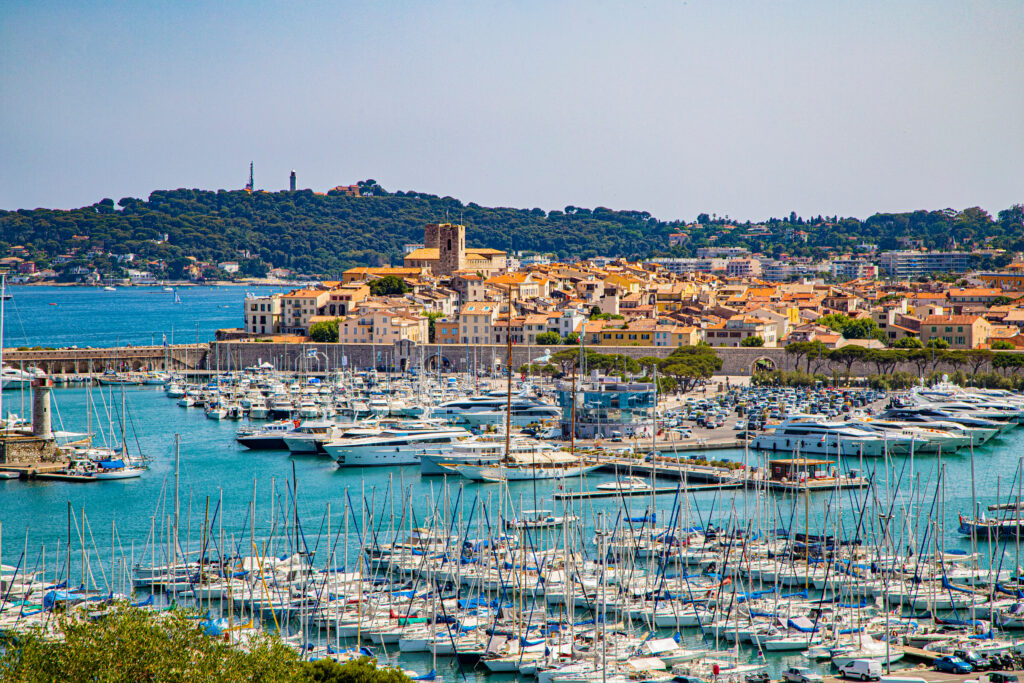
Port Vauban, the largest marina in the Mediterranean, is a veritable paradise for yachting and sailing enthusiasts. Located in the heart of Antibes, this modern port can accommodate over 1,500 boats, including some of the world's most luxurious yachts. Stroll along the quays to admire these impressive vessels and feel the bustle of the port. The port is also home to the famous Antibes Yacht Club and offers a variety of maritime services. It's an ideal place fora stroll at the end of the day, with many restaurants and cafés nearby.
9- Jazz à Juan
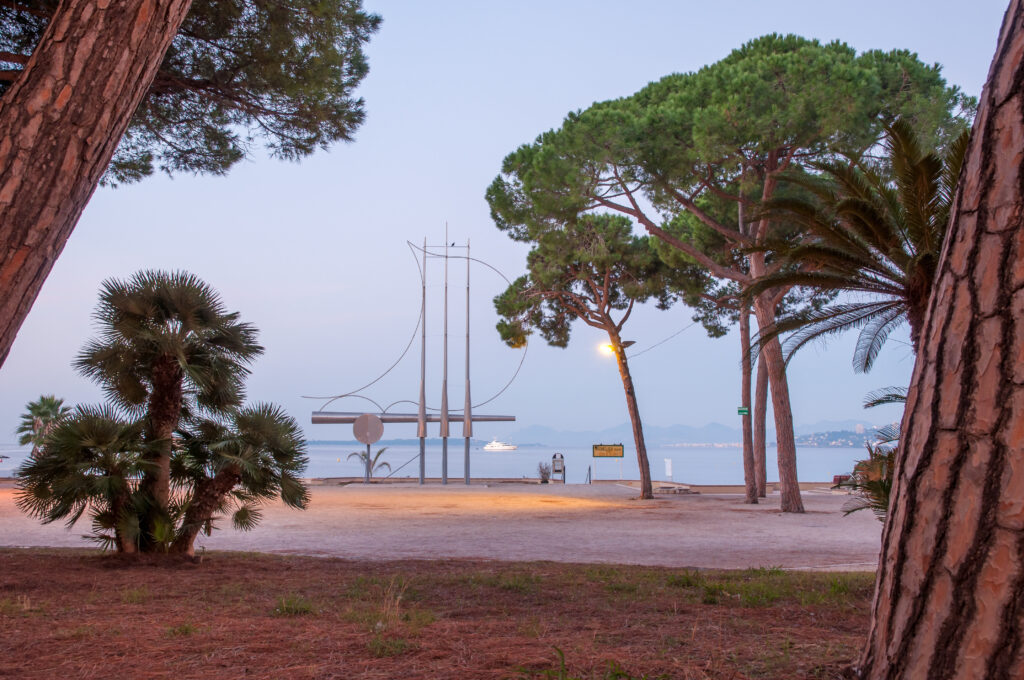
The Jazz à Juan festival, held every July in Juan-les-Pins, is one of the most prestigious musical events on the Côte d'Azur. Since 1960, the festival has welcomed jazz legends such as John Coltrane, Ella Fitzgerald and Miles Davis, as well as contemporary artists. Set in the Gould pine forest, the setting is idyllic, with open-air concerts by the sea. The festival also features "jazz-offs" where ensembles compete for prizes. An experience not to be missed. If you're in Antibes in June, you'll also have the chance to attend the Nuits Carrées, one of the South of France's must-see festivals!
10- Musée Peynet et du Dessin Humoristique

The Musée Peynet et du Dessin Humoristique, located in the heart of Antibes, is dedicated to the works of the famous cartoonist Raymond Peynet. Known for his "Lovers", Peynet left his mark on the art of cart ooning in the 20th century. The museum houses a vast collection of his drawings, illustrations and related objects, spanning a career spanning more than 50 years. Visitors can discover his posters, caricatures and even decorated porcelain. It's a charming place that will delight art lovers and the curious alike.
11- Marineland

Sometimes disparaged, Marineland in Antibes remains a fascinating place to discover underwater life. The park features numerous aquariums where you can observe a wide variety of fish, sharks, rays and other marine creatures. Educational exhibits offer detailed information on marine ecosystems, ocean conservation and environmental challenges. You can also explore themed areas such as the Shark Aquarium and the Manta Tunnel, which offer total immersion in the underwater world.
Also check out our must-sees for a weekend in Nice, and here are the hottest activities in Antibes at the moment:
Where to go for an evening stroll in Antibes?
- Old Antibes: Explore the cobbled streets of Old Antibes, where boutiques, cafés and restaurants line the narrow streets. The atmosphere is particularly pleasant in the evening, with soft lights and lively terraces. The Place Nationale is an ideal place to stop and enjoy the local atmosphere.
- Port Vauban: Stroll along the quays of this marina, the largest in the Mediterranean. You can admire the luxurious yachts and enjoy the many restaurants and bars nearby. Jaume Plensa's Nomade, a monumental sculpture, is a must-see at the entrance to the port.
- Promenade Amiral-de Grasse: This promenade runs along the ramparts of the old town, offering spectacular views of the Mediterranean Sea. It's the perfect place for a leisurely stroll at the end of the day, especially at sunset.
What's the speciality of Antibes?
Antibes' culinary specialty is the "pan bagnat", a traditional sandwich from the Nice region that is also very popular in Antibes. The sandwich is made with a round loaf of bread, usually soaked in olive oil, then topped with tuna, hard-boiled eggs, tomatoes, peppers, onions, black olives and anchovies, all seasoned with salt, pepper and vinegar. Pan bagnat is a true icon of Côte d'Azur cuisine, reflecting the flavors and ingredients typical of the region.
In addition to pan bagnat, Antibes is also known for its Provencal markets, where you can find a variety of local products such as cheeses, olives, herbs and seafood.
Who were the founders of Antibes?
The Phocaeans, Greek settlers from Phocée (now Foça, Turkey), founded Antibes, originally known as Antipolis, in the 5th century B.C. These Greek colonists established Antipolis as a trading post to facilitate maritime trade in the Mediterranean.
Antipolis grew into a prosperous city, benefiting from its strategic position between the mountains of the Alps and the Mediterranean Sea, and soon played an important role in Greek trade networks. The Roman Empire later integrated the city, retaining its economic and strategic importance.
Take a look at our train ticket prices and book now !


